Northern European Trek
Prague, Czech Republic
Saturday, August 24, 2013

Imagine staying in a building that used to be the headquarters of the Soviet secret police, where people were beaten in cells in the basement. It sounds awful. Yet the building has been transformed in recent years into the lovely hotel Unitas. In what used to be the terrible basement, you can visit the cell where Václav Havel (first president of the Czech Republic, poet, and playwright) was held during his dissident years. For some reason unknown to us, we ended up in the honeymoon suite, where the double mattress is really a double mattress!
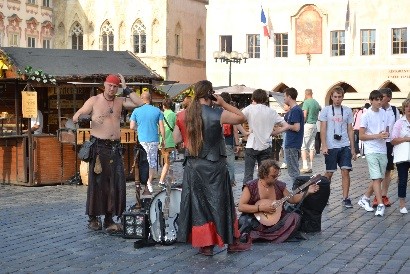 Our impressions of Prague are jumbled with contradictions. We have happy memories from previous visits mixed with the shock of finding a different city than before, with graffitied walls, drunk men peeing on the street, throngs of tourists, gorgeous buildings, and shops filled with tchotchkes and bling. The main square was packed with wandering, dazed tourists, performers cracking whips and juggling fire, riot police on standby just in case, prostrate beggars, and all sorts of drunken types. We found refuge and glorious music at a concert in the beautiful Saint Nicholas Church, where Mozart himself once played the organ.
Our impressions of Prague are jumbled with contradictions. We have happy memories from previous visits mixed with the shock of finding a different city than before, with graffitied walls, drunk men peeing on the street, throngs of tourists, gorgeous buildings, and shops filled with tchotchkes and bling. The main square was packed with wandering, dazed tourists, performers cracking whips and juggling fire, riot police on standby just in case, prostrate beggars, and all sorts of drunken types. We found refuge and glorious music at a concert in the beautiful Saint Nicholas Church, where Mozart himself once played the organ.
Sunday, August 25, 2013: Praha, Czech Republic
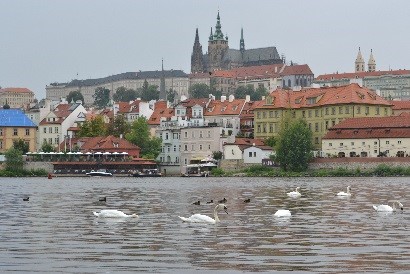
Prague is full of tourists, so we found it easy to take on the role of holidaymaker with maximum enthusiasm by joining an organized walking tour of the city. We shifted from our normal self-directed mode into sheep-mode and were guided from marvel to marvel by a brilliant and beautiful Czech doctoral student. She told us stories of Czech resistance, first to the Nazis and then the Soviets. We saw the wall where young people in the 1970s wrote lyrics from the Beatles' songs because the music was banned and so was graffiti. Now it's covered in layers of scrawl and art from countless people with lots to write and nothing to say.
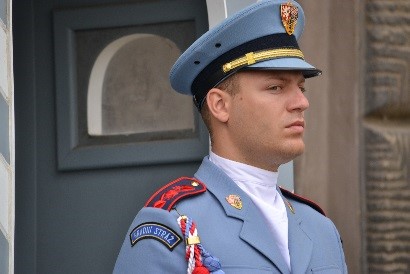 We went to the Jewish quarter and heard about Nicholas Winton, who organized the rescue of almost 700 Jewish children from Prague before war broke out in 1939. The children were sent by train to England. When war started, the trains were stopped, and the last trainload of kids on their way to safety was sent back to Prague and certain death. Many years after the war, the rescued children (now all elderly having lived fruitful lives) met the unassuming hero Nicholas Winton, who'd saved them.
We went to the Jewish quarter and heard about Nicholas Winton, who organized the rescue of almost 700 Jewish children from Prague before war broke out in 1939. The children were sent by train to England. When war started, the trains were stopped, and the last trainload of kids on their way to safety was sent back to Prague and certain death. Many years after the war, the rescued children (now all elderly having lived fruitful lives) met the unassuming hero Nicholas Winton, who'd saved them.
Monday, August 26, 2013: The kids
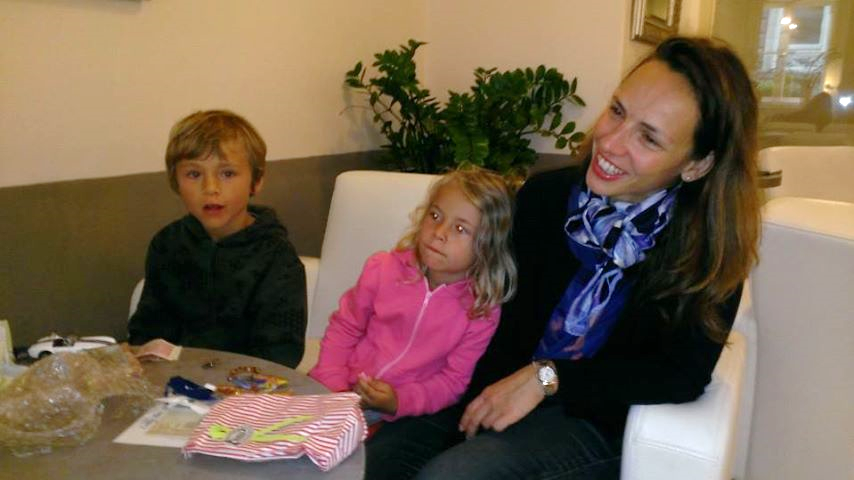
Our families are spread across the globe, so we don't see each other often. But when we do meet up, it is wonderful. We spent the day with our niece and nephew and their mum. Luckily, they were on holiday in the Czech Republic too. We explored Prague, ate traditional warm crispy flat wafer cookies, and tried but rejected some other cake and ice cream that, according to my four-year-old niece, was: "Disgusting." We really had so much fun and were so happy to spend the day together.
Wednesday, August 28, 2013: Mt. Lusen, Bavarian Forest National Park
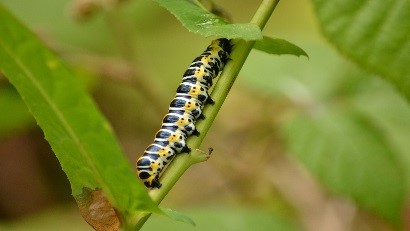
Imagine yourself in rural small-town America in the back of beyond. Just a handful of houses, a few sheds, maybe a tiny church, and a bar. If you travel to a German town instead, you will find the roofs of most of the buildings covered in solar panels. The houses will be newly painted and their gardens brimming with flowers. Every small town is picture-perfect. Germany is perfect! One German apologetically told us that: "We only have 25% of our power from renewable energy." It seems we should've apologized, given the USA's meager 12%.
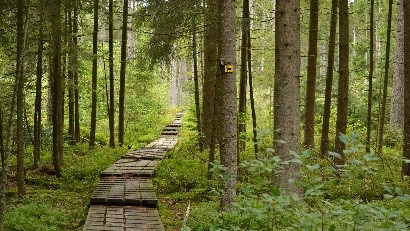
Perhaps Germany is not completely perfect; the country fails miserably when it comes to maps and signage in National Parks. With its trails and maps, America rules supreme. In Germany, in places where there are no turns or decisions required, the trails are beautifully marked every few feet with their designated symbol stuck on the forest trees. Yet when markers are really needed, at villages and multi-choice intersections, the much-needed symbol system disintegrates, and the map shows an impossible array of options or none at all. All we could do, in moments like these, was trust our vague sense of direction and hope we would not get lost in the deep dark forest.
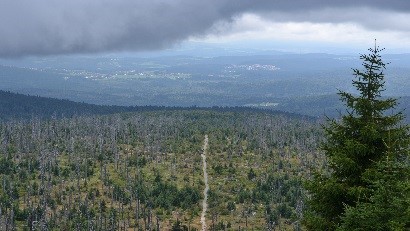
With incredible luck, we found Mount Lusen, one of the biggest peaks in the area (maybe its sheer size helped us locate it). The way up took us through Hansel and Gretel forests, dark and magical, then opened into areas where the big trees were all damaged and broken as if a giant's foot had landed upon them. We soldiered upwards to the magnificent rocky peak as thunderous black clouds accumulated above. The path was made of huge bright green lichen-covered boulders that we scrambled over to summit this Bavarian beauty. We eventually sat and consumed our obligatory cheese sandwiches with the vast Bavarian Forest at our feet.
Bavarian NP
Thursday, August 29, 2013: Mt. Rachel, Bavarian Forest National Park
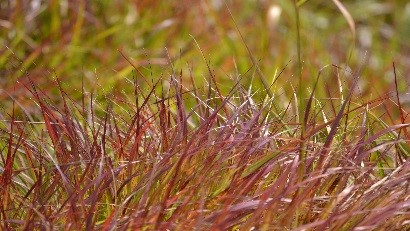
Every morning at breakfast in our quaint GastHaus, we must choose our dinner menu. We are given a sheet of paper with a list of choices, and as we are ignorant of German, we have no idea what we are choosing. On the first day, a nice Austrian couple tried to translate for us, and we spent the day imagining our choice of locally hunted wild boar. But instead, when dinner time came, we got fried potatoes with cheese. This morning, we tried a phone app that brilliantly uses the phone's camera to translate text. The first incomprehensible word scanned gave us the intriguing option of "fried onion rust." We love vegetarian food but skipped this one.

The day continued to be lost in translation. Our hiking destination, Mount Rachel, eluded us. We walked for 14 miles and climbed 2,000 feet, but Rachel's summit remained beyond our meager bipedal capabilities. We blame the map because it misled us and caused us much anguish and confusion. The only starting place for the hike discernible to us was just too far away to get us all the way up Rachel's 4,000 feet. But we walked in more fairy tale forests and found cappuccinos in a wooden hut with flowering window boxes, miles from anywhere. Maybe Germany is perfect after all.
Friday, August 30, 2013: Mt. Falkenstein, Bavarian Forest National Park

If you are really quiet in the Bavarian forest, you can hear a low hum of bees and wasps in the canopy above. They seem to be the only sign of life in this deep, dark, and ancient forest. The bears are hiding out in Bohemia. There are lynx, but they are the most elusive of all creatures. It is rumored that there are wolves concealed among the fir trees, but they keep to themselves. There cannot be many deer, as local German gardens are brimming with unprotected roses and other hoofed animal candy. One animal, the human, is thriving. This particular creature has made itself at home, and even at the top of remote mountains, it feeds itself on fried potatoes, cake, beer, and coffee.

Today, we completed our challenge of hiking three mountains in three days by climbing Mount Falkenstein - or is it Falkensteen? I can never remember. This was an easy climb compared to our two previous marathons: only a 2,000-foot climb and 8 miles total walking. In the last three days, we have hiked 34 miles and climbed over 6,000 feet. We are ready for schnapps tonight, and maybe even fried onion rust for dinner. More likely, it will be a plate of fried schnitzel or boiled dumplings, followed by fried dumpling or boiled schnitzel - or one of the countless versions of these two staples prepared for hungry Bavarian Germans.
Saturday, August 31, 2013: Regensburg & Augsburg, Germany
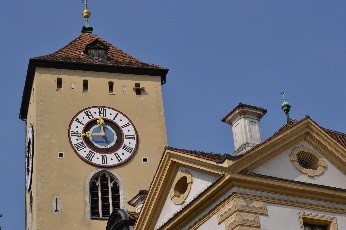
We found an unexpected gem of a city on our drive to Augsburg today: the lovely old town of Regensburg. The center of this ancient town is very well-preserved and has become a mixture of modern shi-shi shops and old medieval buildings. We spent the afternoon taking in the sights and watching the Danube flow through this idyllic city.
Discombobulation, anxiety, exhaustion, panic, confusion, irritation are just a few of the symptoms of arrival shock syndrome (ASS). Yet to be added to the Diagnostic Manual, ASS is a definable psychiatric problem.
 We have experienced it from Amsterdam to Augsburg. On arrival in each big city, tired after a long journey, we encounter ASS. Every street seems dangerous; every person a potential trickster. Yet, after a good night's sleep, the veil of ASS is lifted. The world seems a happy place again, full of smiling people, order, reason, quaint lederhosen, cobbled streets, gothic churches, and sunshine.
We have experienced it from Amsterdam to Augsburg. On arrival in each big city, tired after a long journey, we encounter ASS. Every street seems dangerous; every person a potential trickster. Yet, after a good night's sleep, the veil of ASS is lifted. The world seems a happy place again, full of smiling people, order, reason, quaint lederhosen, cobbled streets, gothic churches, and sunshine.
Day one in Augsburg brought on the worst case of ASS that we have yet experienced. The way into town was complicated with many road diversions, but we stayed calm.
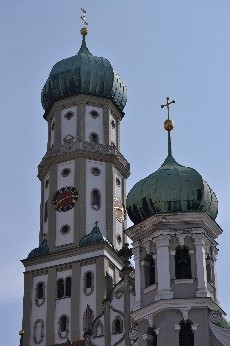 We plugged in the hotel address into our trusty NAV Thomas. We found parking; all seemed okay, just some mild "normal" ASS fluttering in our minds. We parked our car and set off to find our hotel. ASS was gathering strength. The street seemed filled with sleaze. We passed a shop selling huge daggers and pistols, and some smelly old bars pumping out techno music and plumes of tobacco smoke. We saw a sign for our hotel that pointed into a shabby mall, where the floor was sticky from spilled sodas, and the businesses were all closed down. Inside, we found glass doors to what seemed to be our hotel. But they were locked, the lights were off, and we could see old bed frames and mattresses piled up inside. Our ASS escalated. We figured our hotel was out of business. It was evening, and we had nowhere to stay; our ASS was exploding.
We tried to phone the main desk (no answer)! We were sucked down into a maelstrom of ASS. We called other hotels in Augsburg; they were fully booked. We realized that we were both bursting to pee. All was doom and gloom. About to collapse under the strain, we were inspired to call our hotel once more. This time, after one ring, a kind voice said: "Oh, yes, the hotel is just around the corner." We had gone to the wrong entrance.
We plugged in the hotel address into our trusty NAV Thomas. We found parking; all seemed okay, just some mild "normal" ASS fluttering in our minds. We parked our car and set off to find our hotel. ASS was gathering strength. The street seemed filled with sleaze. We passed a shop selling huge daggers and pistols, and some smelly old bars pumping out techno music and plumes of tobacco smoke. We saw a sign for our hotel that pointed into a shabby mall, where the floor was sticky from spilled sodas, and the businesses were all closed down. Inside, we found glass doors to what seemed to be our hotel. But they were locked, the lights were off, and we could see old bed frames and mattresses piled up inside. Our ASS escalated. We figured our hotel was out of business. It was evening, and we had nowhere to stay; our ASS was exploding.
We tried to phone the main desk (no answer)! We were sucked down into a maelstrom of ASS. We called other hotels in Augsburg; they were fully booked. We realized that we were both bursting to pee. All was doom and gloom. About to collapse under the strain, we were inspired to call our hotel once more. This time, after one ring, a kind voice said: "Oh, yes, the hotel is just around the corner." We had gone to the wrong entrance.
The next morning, after a night of rest under fluffy quilts, we realized that one must never, ever make a judgment about a place until the savage beast of ASS is pushed back into the subconscious mind from whence it hails.
Regensburg
Sunday, September 1, 2013: Augsburg, Germany
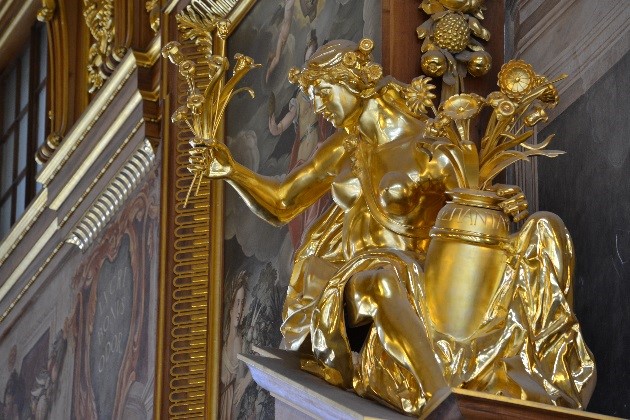
The ancient city of Augsburg was bombed during WWII. Among its losses was an amazing baroque town hall containing a huge golden hall, which was smashed to smithereens. After the war, the people decided to rebuild an exact copy of the building, which represented the wealth and success of their town through the ages.
The endeavor took several decades and great skill; the golden hall was finally re-completed in the 1990s. The total price was 9 million euros, and the money came from the government, the citizens, and the town's businesses. Nowadays, the Rathaus's large wooden doors automatically swing open as you approach them. Inside, off the main entrance hall, there are two small side rooms. One contains a very long list of names: a memorial to the Jewish people from Augsburg who were systematically executed in the Holocaust, and the other room has a war memorial to the German soldiers from the city. The new "old" golden hall is up the grand stairs. It is indeed very gold, and very impressive, and requires lots of neck craning to look up into its majestic details.
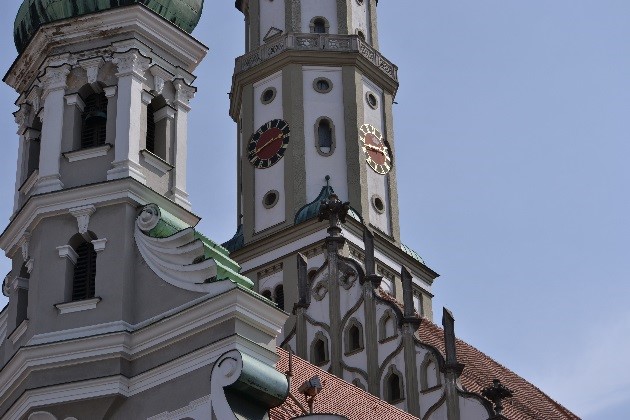
Augsburg would like to claim Mozart as one of its own, so we went to hunt for evidence of the most brilliant composer of all time. We found the house where his father Leopold was born. We walked around the Fuggerei (the first social housing founded in 1521 by a banker to the popes) where Mozart's great-grandfather lived. We discovered the cathedral where his father's family went to church. We explored Saint Ulrich's church, where there is a lock of the genius's hair (hidden safely away in some secret place); the story goes that a piece got pulled out as Mozart ran up the stairs to play the organ. But we finally found the marvelous maestro's spirit in a live performance by the Emerson String Quartet as they played Mendelssohn, Bartok, and Dvorak.
Tuesday, September 3, 2013: Ravensburg & Friedrichshafen, Germany

Ravensburg was one of the few cities that wasn't bombed during WWII. So, this means its old medieval center is mostly intact. It seemed to have been a walled city as there are many tall gate towers still there. We stayed at a very average hotel that is well located in the old part of town. The food at the hotel tasted great but made us both quite ill. This is the third time on the trip David has gotten food poisoning. So much for traveling in developed countries.
On our way to Friedrichshafen to visit the Zeppelin Airship museum, we made a wrong turn and found ourselves at the amazing Dornier museum. Dornier was a German aeronautic pioneer, whose many claims to fame included designing the world's first metal airplanes. He dreamed of changing the world with large-scale passenger aircraft. So, in the 1920s and '30s, his company developed airplanes like giant luxury cruise ships that took off and landed in water to transport people across continents. Unfortunately, the Nazis came to power, and Dornier's factories put concentration camp prisoners to work. Information in the museum suggested that Dornier made some small effort to improve conditions for these starving slaves.
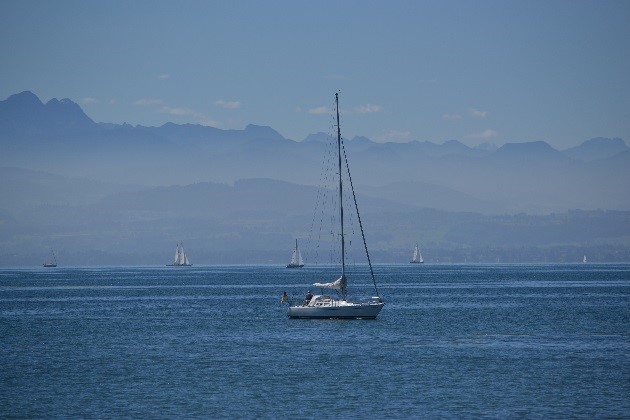 It implied that he was reluctant to show support for the vile regime. What a horrendous time it was. Could Dornier have left Germany? Could he have walked away from his life, or ended it? Meanwhile, German airplanes dropped bombs on London, and then, with the help of the Americans, British airplanes carpet-bombed nearly every German city. The war killed 55 million, and two civilians were killed for every one soldier in this monstrous episode of death and destruction.
It implied that he was reluctant to show support for the vile regime. What a horrendous time it was. Could Dornier have left Germany? Could he have walked away from his life, or ended it? Meanwhile, German airplanes dropped bombs on London, and then, with the help of the Americans, British airplanes carpet-bombed nearly every German city. The war killed 55 million, and two civilians were killed for every one soldier in this monstrous episode of death and destruction.
We finally made it to the Zeppelin museum and thought how great it must have been to travel the Atlantic in a floating airship. We wandered along the shore of Lake Constance with a view of massive glacier-topped Swiss Alps along the skyline. The path was filled with happy people, eating ice cream and holding hands, oblivious, in that moment, to their infernal human history.
Wednesday, September 4, 2013: Raitenbuch, Black Forest, Germany
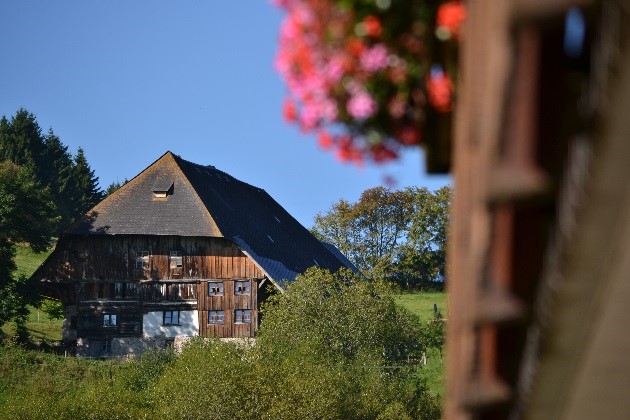
Cowbells jangled, and German geraniums flourished in the idyllic valley that is home to the hamlet of Raitenbuch. Immersed in the bucolic setting, we wandered along forest paths and followed the edges of farmers' hayfields while raptors scanned the freshly mowed grass for mice.
It was a hot day, and we felt baked after our hike, so we decided to go for a swim in nearby Lake Titisee. We are like a pair of Mr. Magoos as we drive along, oblivious to the meaning of road signs. Despite ourselves, we drove into a large parking lot for what we thought was the lake swimming area. But it was really a super-duper high-tech 38°C indoor/outdoor swimming pool, with underwater lounge chairs that, when you lay on them, bubbled water over all your body parts. Sheer luxury after a long hike, I can assure you. As we relaxed and sipped cool drinks from the swim-up bar, we wished that Mary and David were enjoying life with us. Instead, they were trapped on their 16-hour train journey from hell, coming to meet us here.
Raitenbuch
Thursday, September 5, 2013: Mt. Feldberg, Black Forest, Germany
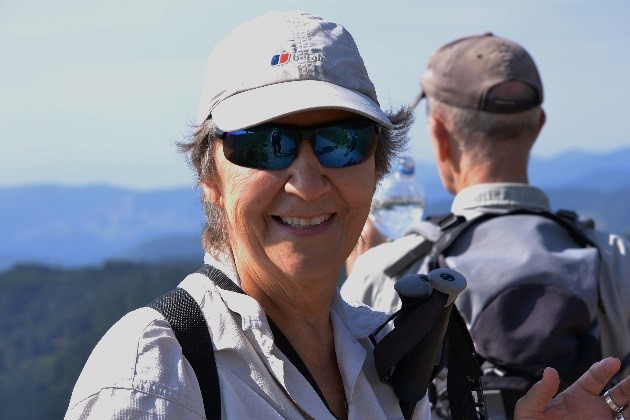
With admirable resilience, our parents were up and ready for a 6-mile, 2,000-foot hike this morning. After our breakfast of various German breads thickly slathered with creamy German butter, we were off. David and Mary's energy was amazing as they had spent hours on airplanes and trains to meet us, and then we all partied hard at our Gasthaus dinner in celebration of our overdue reunion. Nevertheless, undaunted by travel fatigue and schnitzel consumption, we conquered the Feldberg Peak. Admittedly, we shortened our climb by taking a cable car ride to get up the first few hundred feet of the tallest mountain in the Black Forest High Country. Fueled by on-route cappuccinos, we made an attempt to catch up on our news, and as Mary said, "We had a lorra laughs."
Sunday, September 8, 2013: Hohenzollern Castle, Black Forest, Germany
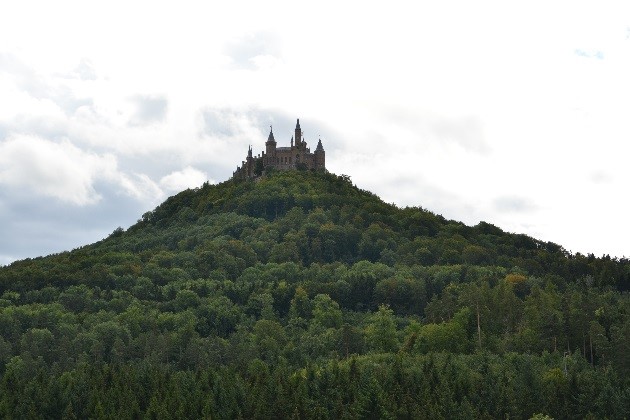
Obsessed by the military, narcissistic, and filled with hate, Kaiser Wilhelm II set in motion the twentieth-century carnage of two world wars and all their deadly consequences. The despicable royal and his distorted ideals and disgusting ideology seem to have been a kind of template for Hitler to aspire to. With a little bit of morbid curiosity, and drawn by the image of the ominous castle on a hill, we decided to visit Burg Hohenzollern, which is claimed as the ancestral home of Kaiser Wilhelm II and the other Kings of Prussia. It is a castle built out of nostalgia for medieval knights, chivalry, royal dynasty, and imperial power. It was rebuilt in the mid-nineteenth century on the site of a ruined medieval castle and in a gothic style, like some kind of Disney-meets-King-Arthur combination.
 From an aesthetic and architectural perspective, it is an excellent place. There is an admirable collection of art and treasures within its walls, including a bejeweled Prussian crown. In the gift shop, you can buy a postcard with a photo of the current Prince of Prussia, which seems strange as his nasty ancestor abdicated in 1918. Monarchy ended, but the royal lineage continues, perhaps hopeful that they may be reinstated someday.
From an aesthetic and architectural perspective, it is an excellent place. There is an admirable collection of art and treasures within its walls, including a bejeweled Prussian crown. In the gift shop, you can buy a postcard with a photo of the current Prince of Prussia, which seems strange as his nasty ancestor abdicated in 1918. Monarchy ended, but the royal lineage continues, perhaps hopeful that they may be reinstated someday.
All the way back to our hotel, we admired the perfect countryside and quaint, flawless villages. We took a nap, then awoke to a five-course German feast with dumplings and sauerkraut; this evening, we found that we were living like Prussian kings ourselves.
Monday, September 9, 2013: Baiersbronn, Black Forest, Germany
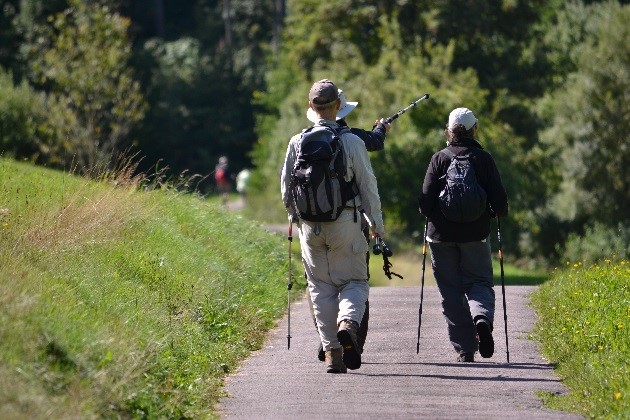
Out of the window of our hotel room in the lovely hamlet of Baiersbronn were geraniums in window boxes, and green fields stretching away into hills covered in dark forests. For the fourth time on this trip, we just walked into the forest straight from our hotel. With map in hand, the now four intrepid hikers followed a route into the Black Forest, which really is black but lit up with a few spotlights of sunshine here and there. As official tour guides and map readers for our troop, we failed miserably. We circled around the wrong direction on our planned route, confused by incongruence between the German map and signs. Regardless, we had a wonderful time in the fabulous forest, and as always, Mary and David never complained once about our poor navigation. Eventually, we did realize we were walking in the opposite direction to our planned cappuccino stop. Soon after, we discovered our true location, and all was well once more.
We hiked through a green valley, tickled the nose of a friendly cow, got our cappuccinos, and made our way home after 12 miles of terrific trekking through the wonderful Black Forest.
Baiersbronn